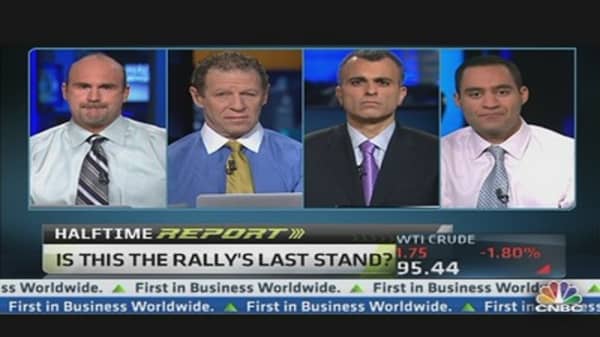Nowhere has this been more apparent than in the bond market, where companies issued a record $154.5 billion in junk bond debt during the first quarter, a record. Seventy percent of that total came from the U.S., which actually is low by historical standards but still in a danger zone.
(Read More: Fed Throws Junk Bond Lifeline to Weak Companies)
If warnings of a bond bubble bursting become reality, those high-yield investors—particularly the ones playing through funds that trade and depend on capital appreciation—could get crushed.
"After sliding for 30 years, it's highly unlikely that bond yields can go much lower; the end of the bond bull may well be nigh," Carol M. Schleif, chief investment officer at Wells Fargo division Abbot Downing, said in a report. "For the millions of bond fund investors late to the party, the notion that one can lose money (and quite a lot of it) in bond funds may become as harsh a reality as 2001–02 was to technology investors."
2. Housing Bubble, Part 2
Since late 2012, the U.S. housing market has been growing at a steady and strong pace, pushed ahead organically through a bottoming in prices and artificially through the Fed's zero interest rate policies that have kept mortgage rates near historic lows.
Apparently, though, somebody in Washington is getting antsy.
Reports have surfaced (including this one in the Washington Post) that the Obama administration is taking a hair-of-the-dog-that-bit-you approach to the housing renaissance and directing banks to lend to riskier borrowers.
(Read More: No Money? No Worries. Home Lenders Ease Rules)
This is exactly the kind of thing that got the housing market in trouble to begin with, and a repeat performance is almost certain to end in disaster if debt loads become onerous and private investors suddenly get a taste again for mortgage-based products.
As with the warning above on risk, debt could become a problem again quickly. Household debt grew 6.4 percent in the fourth quarter, the most since 2007, according to Fed flow of funds data.
3. The Recovery That Isn't.
Much of the stock market gains have been predicated on unconventional stimulus policies from the Federal Reserve, as well as on an economy that is progressing on the road to recovery.
And while first-quarter growth looks like it will easily surpass the anemic 0.4 percent gross domestic product gain from the fourth quarter of 2012, the second quarter suddenly isn't looking so rosy.
A string of recent economic reports show that job growth is falling behind its 2012 trend, while manufacturing indexes have been universally unimpressive and service sector growth has hit a seven-month lull. Finally, earnings growth is expected to disappoint from the first quarter, with companies issuing strongly negative outlooks.
(Read More: Work Slowdown? ADP Says Job Creation Declining)
With momentum based on at least par growth ahead, even the Fed's money-creation machines may not be able to keep the market's searing pace on course.
"Recent economic data ... have suggested a slowdown in activity as we approach" the second quarter, economists at Nomura Securities wrote in an analysis. "This lends support to our forecast that there will be a slowdown in growth in Q2 from slower government spending, delayed household adjustment to higher tax burdens, and a smaller increase in inventories."
Their forecast: GDP will grow just 1.4 percent in the second quarter, suggesting that the U.S.—despite Wall Street calls for a continued recovery—may not be the best of a bad global lot after all.





